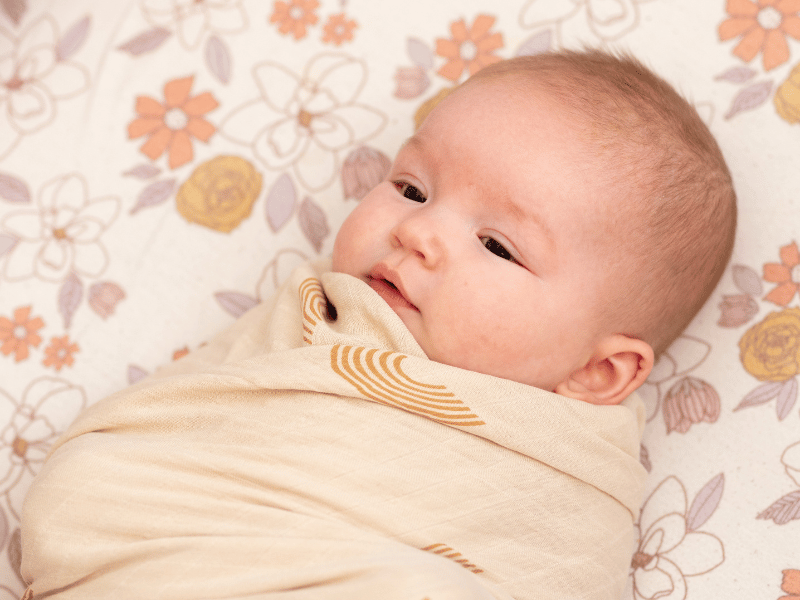A Mother’s Guide to Newborn-Friendly Fabrics

Choosing the right fabrics for your newborn is an essential part of providing a comfortable and safe environment for your baby. With sensitive skin and unique needs, babies require fabrics that are gentle, breathable, and free from irritants. As a mother, understanding the best fabric options can make all the difference in your baby’s comfort and well-being.
In this guide, we’ll explore the top fabrics for newborns, why they matter, and how to make the best choices for your baby’s clothing, bedding, and accessories.
Why Fabric Choice Matters for Newborns
Newborn skin is much thinner and more delicate than adult skin, making it more susceptible to irritation and allergies. The wrong fabric can cause:
-
Skin rashes or redness.
-
Discomfort due to overheating or poor breathability.
-
Allergic reactions from synthetic materials or dyes.
Selecting newborn-friendly fabrics ensures your baby stays comfortable, healthy, and happy

Top Fabrics for Newborns
1. Organic Cotton
Organic cotton is a go-to choice for newborns due to its softness, breathability, and hypoallergenic properties. It is free from harmful chemicals and pesticides, making it ideal for sensitive baby skin.
Why Choose Organic Cotton?
-
Gentle on delicate skin.
-
Excellent for all seasons due to its breathability.
-
Durable and easy to wash.
Best Uses:
-
Baby onesies and bodysuits.
-
Swaddles and receiving blankets.
-
Bedding and crib sheets.
2. Bamboo
Bamboo fabric is gaining popularity for its ultra-soft texture and natural antibacterial properties. It’s also highly breathable and moisture-wicking, keeping your baby dry and comfortable.
Why Choose Bamboo?
-
Naturally hypoallergenic and antibacterial.
-
Regulates temperature, making it ideal for hot or cold weather.
-
Sustainable and eco-friendly.
Best Uses:
-
Sleepwear and pajamas.
-
Washcloths and towels.
-
Baby wraps and carriers.
3. Muslin
Muslin is a lightweight, breathable fabric often used for swaddling blankets and burp cloths. Its open weave allows air to circulate, reducing the risk of overheating.
Why Choose Muslin?
-
Softens with every wash.
-
Lightweight and perfect for layering.
-
Easy to fold and store.
Best Uses:
-
Swaddles and burp cloths.
-
Nursing covers.
-
Lightweight stroller blankets.
4. Merino Wool
Merino wool is a natural fiber known for its temperature-regulating properties. It’s gentle enough for newborn skin and helps keep babies warm in winter and cool in summer.
Why Choose Merino Wool?
-
Naturally breathable and moisture-wicking.
-
Soft and non-itchy compared to regular wool.
-
Antimicrobial properties reduce odors.
Best Uses:
-
Winter clothing and sleep sacks.
-
Hats and mittens.
-
Layering pieces for outdoor activities.
5. Modal
Modal is a semi-synthetic fabric made from beech tree pulp. It is incredibly soft, stretchy, and lightweight, making it perfect for baby clothing.
Why Choose Modal?
-
Silky texture that’s gentle on the skin.
-
Resistant to shrinkage and fading.
-
Excellent moisture-wicking properties.
Best Uses:
-
Bodysuits and rompers.
-
Undergarments.
-
Lightweight baby blankets.

Fabrics to Avoid for Newborns
While there are many baby-friendly fabrics, some materials can cause discomfort or irritation. Avoid the following:
1. Synthetic Fabrics (e.g., Polyester)
-
Can trap heat and moisture, leading to skin irritation.
-
Often treated with chemicals that may irritate sensitive skin.
2. Wool Blends
-
Regular wool blends can be coarse and itchy, unlike merino wool.
-
May cause allergies in some babies.
3. Fabrics with Harsh Dyes or Finishes
-
Chemical dyes and flame retardants can irritate newborn skin.

Tips for Choosing Newborn Fabrics
-
Look for Certifications:
-
Opt for fabrics certified by organizations like GOTS (Global Organic Textile Standard) or OEKO-TEX®, ensuring they’re free from harmful chemicals.
-
Test for Softness:
-
Always feel the fabric to ensure it’s soft and gentle enough for a newborn.
-
Prioritize Breathability:
-
Choose fabrics with excellent airflow to prevent overheating.
-
Check Care Instructions:
-
Select fabrics that are machine washable and easy to maintain.
-
Consider Seasonal Needs:
-
Lightweight fabrics like muslin are ideal for summer, while merino wool is better for colder months.
Conclusion
Choosing the right fabrics for your newborn is an essential step in creating a safe, comfortable, and nurturing environment. Organic cotton, bamboo, muslin, merino wool, and modal are excellent choices for their softness, breathability, and hypoallergenic properties. By prioritizing high-quality materials and avoiding harsh fabrics, you can ensure your baby stays happy and healthy.
With this guide, you’ll have the confidence to select newborn-friendly fabrics that meet your baby’s needs and make parenting a little easier.
No comments



















0 comments